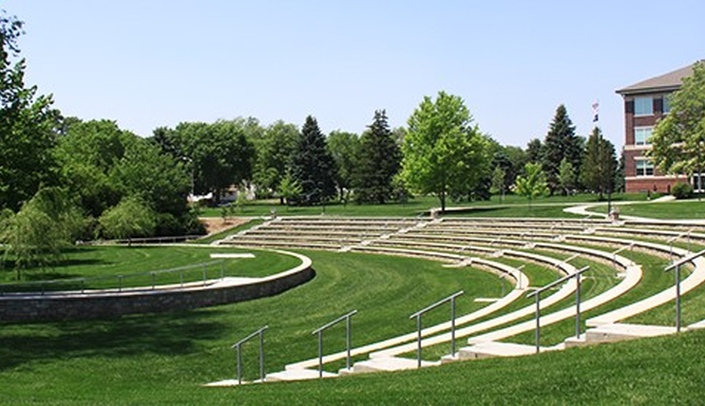Lelissa Umeta didn’t know much about the Nebraska INBRE program.
The biology major at Chadron State College had heard things from her teacher and read about it online, but until she met INBRE Director, Paul Sorgen, Ph.D., she had no idea the extent of the program.
"After meeting Dr. Sorgen I was pumped," Umeta said.
"He explained so much about the program, answered all of my questions, and even explained how it impacts the application process for graduate school," she said. "It was really helpful to have him come to our college and talk to us."
Throughout the month of March, and again in October, Dr. Sorgen goes to all eight institutions participating in the Nebraska INBRE program.
If you ask him why he takes the time away from his own research projects, as well as duties overseeing the program, he points to students like Umeta.
"It allows me the opportunity to not only connect with them, but learn about their future goals, and I hope it shows them just how valuable the program is and how invested I am in their success," Dr. Sorgen said.
During each campus visit, Dr. Sorgen spends two hours touring the campus, talking with INBRE campus coordinators who give him progress reports and tell him about equipment needs, as well as meet with second year scholars to learn what their plans are after graduation.
He also spends a block of time talking with incoming scholars like Lelissa, describing the 10-week summer research experience, and explaining what is required of each scholar.
"We require them to attend the Nebraska Academy of Sciences meeting in April and the annual INBRE meeting in August, as well as participate in the Monday workshops, all of which is to help them develop confidence, and the skills to pursue a career in biomedical research," Dr. Sorgen said.
Each campus is so different that the visits also allow him to better understand their research culture, he said.
"I think that scholars stay more engaged from these visits as they do not want to let Dr. Sorgen down," said Shawn Pearcy, Ph.D., a professor in the life sciences department at Wayne State College and senior executive committee member.
Dr. Pearcy said the interactions provide each campus a voice and an opportunity to help steer the program toward success individually and as a whole.
"While some of this can be done over the phone, or by email, these meetings are an easy way to get caught up on things for the grant and the face-to-face interaction really strengthens the program," he said.
